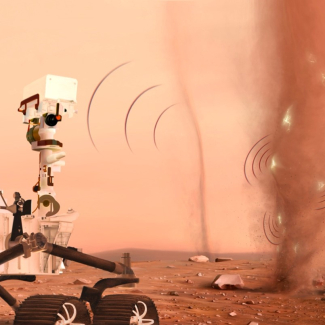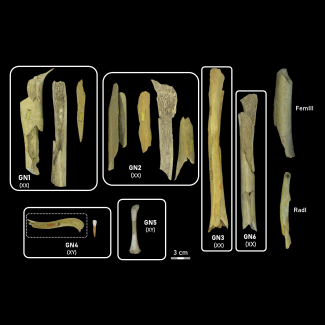
"Three electrons are enough: an unprecedented experiment sheds light on the laws of matter"
Three electrons are enough to trigger strong interactions between particles. That is what was demonstrated by scientists from the CNRS and l’Université de Grenoble Alpes 1 , in collaboration with teams from Germany and Latvia, in a study published in the journal Nature on 25 June 2025.
With the help of a tiny collider they built themselves, the researchers successfully “accelerated” up to five electrons at the same time toward a separation barrier, and counted the number of electrons present on each side.
The result: three electrons are enough to show strong interactions between particles. With five electrons, the interactions become so intense that they imitate the behaviour of hundreds of billions of electrons. Placed together, these three particles form an actual "heap" in liquid state.
Inspired by the heap paradox 2 – how many grains of rice are needed to form a heap ? – this unprecedented experiment helps better understand the moment at which collective behaviour in matter is born. These principles apply not only in nanoelectronics, but also in the physics of elementary particles, for instance at the LHC.
- 1[1] Working at l’Institut Néel (CNRS).
- 2[2] The sorites paradox, or the paradox of the heap, explores how to think about gradual changes. A grain of rice is not a heap. Neither is two. Yet by adding more and more, a heap eventually appears. At what precise moment? Impossible to know. This reasoning, which was formulated by the Greek philosopher Eubulides, shows the limits of our logic in the face of gradual transformations.
Evidence of Coulomb liquid phase in few-electron droplets. Jashwanth Shaju, Elina Pavlovska, Ralfs Suba, Junliang Wang, Seddik Ouacel, Thomas Vasselon, Matteo Aluffi, Lucas Mazzella, Clément Geffroy, Arne Ludwig, Andreas D. Wieck, Matias Urdampilleta, Christopher Bäuerle, Vyacheslavs Kashcheyevs and Hermann Sellier, June 2025, Nature.
DOI : https://doi.org/10.1038/s41586-025-09139-z


